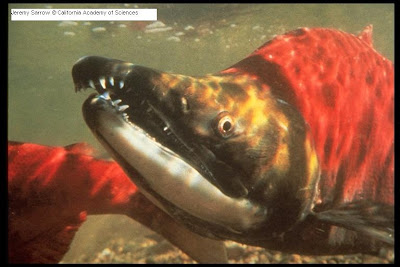My buddy Alan sent me this one. We're big fans of the cephalopods of the world, having encountered them on dives in Mexico.
Now, I hesitate to call this ugly. In fact, given its polka-dots and diminutive tentacles, I daresay its cute. But its a mollusk, so it belongs here.
You're looking into the eye of a Hawaiian bobtail squid. Chemical and Engineering News recently reported on them, highlighting the fact that they use unusual proteins to disguise itself from nocturnal predators:
The squid has a light-producing organ on its underside that is powered by luminescent bacteria. The light emitted by these bacteria is reflected downward by stacks of silvery platelets located behind the bacteria-containing tissue.
By beaming this light downward, scientists think the squid avoids casting a shadow and forming a silhouette in the moonlit waters, thus camouflaging itself against predators at lower depths that are looking upward for prey.
The proteins used in this function are a new discovery, and have been dubbed "reflectins". But these proteins might have a value to more than just the bobtail squid. They might be usable in optical nanodevices. I'm not sure if I should root for an industrial application of these squid proteins, or if I should drop Michael Crichton an email so he can write us another best-selling novel warning us against their use.
In the meantime, Beanie Babies should really consider making a Hawaiian bobtail squid plush toy.
Thanks for the link, Alan.
Photo source: University of Wisconsin-Madison
















































